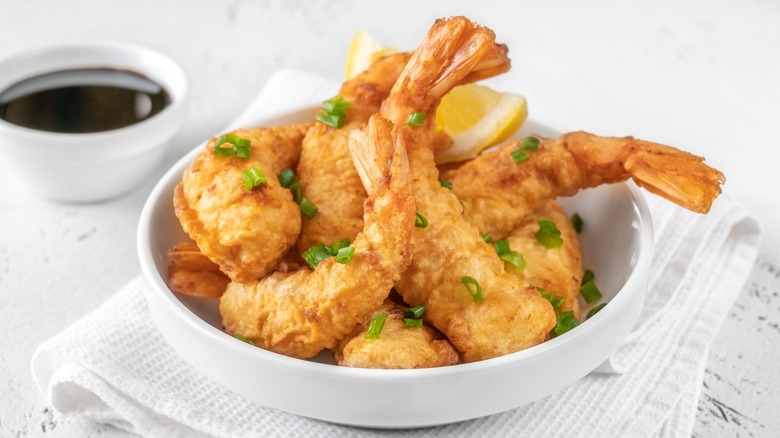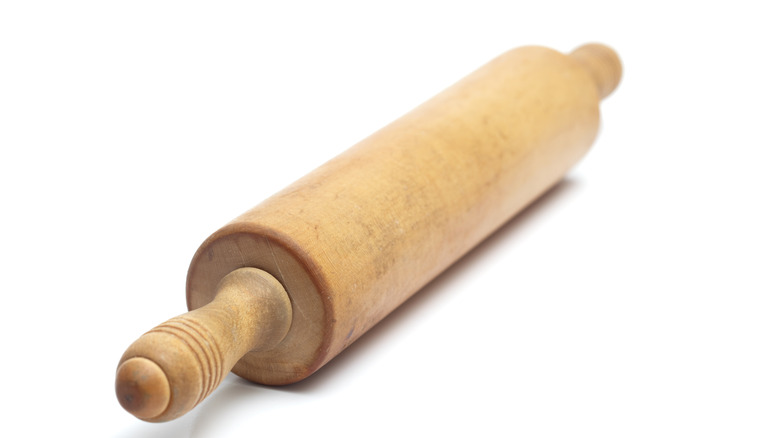The Secret To Better Fried Shrimp Is A Quick Smash With A Rolling Pin
It's time that we gave a shout out to shrimp for being such a versatile protein. Mildly sweet and salt-kissed, the crustaceans can be prepared in many different ways from poaching to pickling and everything in between. That said, one of the tastiest ways to showcase shrimp remains to be frying. Offering a satisfying contrast of textures, crispy breaded shrimp is a crowd pleaser. But, it can be a challenge to ensure fried shrimp boasts the juiciest meat possible underneath its crunchy, golden exterior — cue smashing shrimp with a rolling pin.
Shrimp cooks fast, like really fast. This is why taking measures to ensure that it doesn't become rubbery and dry is so important. Although you could leave shells intact to lock in moisture, some recipes fare best with easy-to-eat, already-peeled shrimp. In which case, brining (in conjunction with velveting) can be helpful. Otherwise, you might want to consider picking up a rolling pin and pounding shrimp to guarantee an especially buttery bite.
The reason behind the smashing is that it can be useful in tenderizing the protein. Much like how taking a mallet to a pork filet or thick chicken cutlet can break up tough muscle fibers for an ultra tender outcome, the same can be true of pounding shrimp. Not to mention that the crustacean will also benefit from more even cooking as it will be flattened, ensuring a quicker cook time and a juicier result because of it.
What to remember when smashing shrimp
Smashing shrimp (and also prawns) is as easy as it sounds. All you need is a rolling pin or a meat mallet. In a pinch, you can even use a sturdy saucepan or empty wine bottle. With the right tool in tow, the pounding process can commence. Simply place the peeled and deveined shrimp on your work surface, and use the rolling pin to gently tap them a couple of times. The goal is to flatten the shrimp slightly, not pound them into a paste. If you notice that the tails begin to detach as you bang the pin, hold the shrimp by its tail to prevent it from totally separating. Once the raw shrimp is perfectly pounded, continue on with your desired recipe.
A final word of advice, while smashing does work wonders for speedy shallow or deep-fried shrimp, no amount of banging can help keep them from drying out if they're subjected to incredibly lengthy cooking periods. So, keep your eye on the time when frying up mallet-mashed crustaceans, whether you're whipping up beer-battered prawns or coconut-breaded shrimp. After all, you wouldn't want all of the elbow grease you put into smashing them to go to waste!

